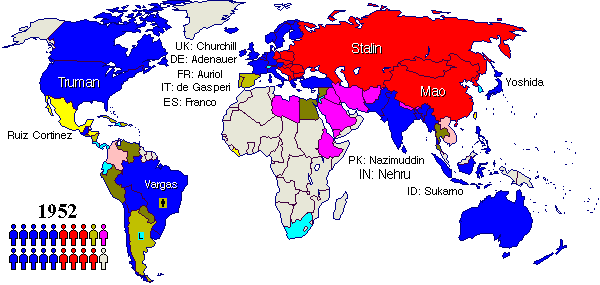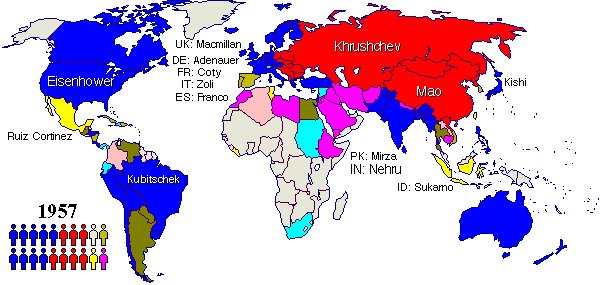



![]()

For the second time in the 20th Century, the world had tranformed itself beyond recognition. With the fall of Fascism, the rise of Communism and the independence of several major colonies, over half of humanity had made a decisive break with the past. The 1950s were an era in which people tried to assess and react to the changes unleashed by the 1940s.
Two trends dominated:
This clear rift between two ascendant and competing philosophies dominated geo-politics in the 50s. It showed itself in the military alliances of the times, and in the temporary borders that divided disputed territories like Germany, Korea and Vietnam.
The collapse of imperialism sputtered and stalled in the 1950s. There was still uncertainty about the eventual fate of Africa -- most Europeans considered the Africans too primitive to stand on their own -- and the French were overcompensating for their easy defeat in the World War by a stubborn refusal to surrender to nationalist movements, first in Indochina, then in Algeria. Although the British had abandoned India without a fight, they now bogged down fighting small wars and insurrections in Kenya and Malaya and Suez. All in all, only 9 new nations arose in the 1950s. [n.1]
![]()
[n.1]
Ghana, Guinea, Libya, Malaysia, Morocco, Sudan, Tunisia and a Vietnam or two (complete)
[back]
Last updated April 1999.
Copyright © 1999 Matthew White